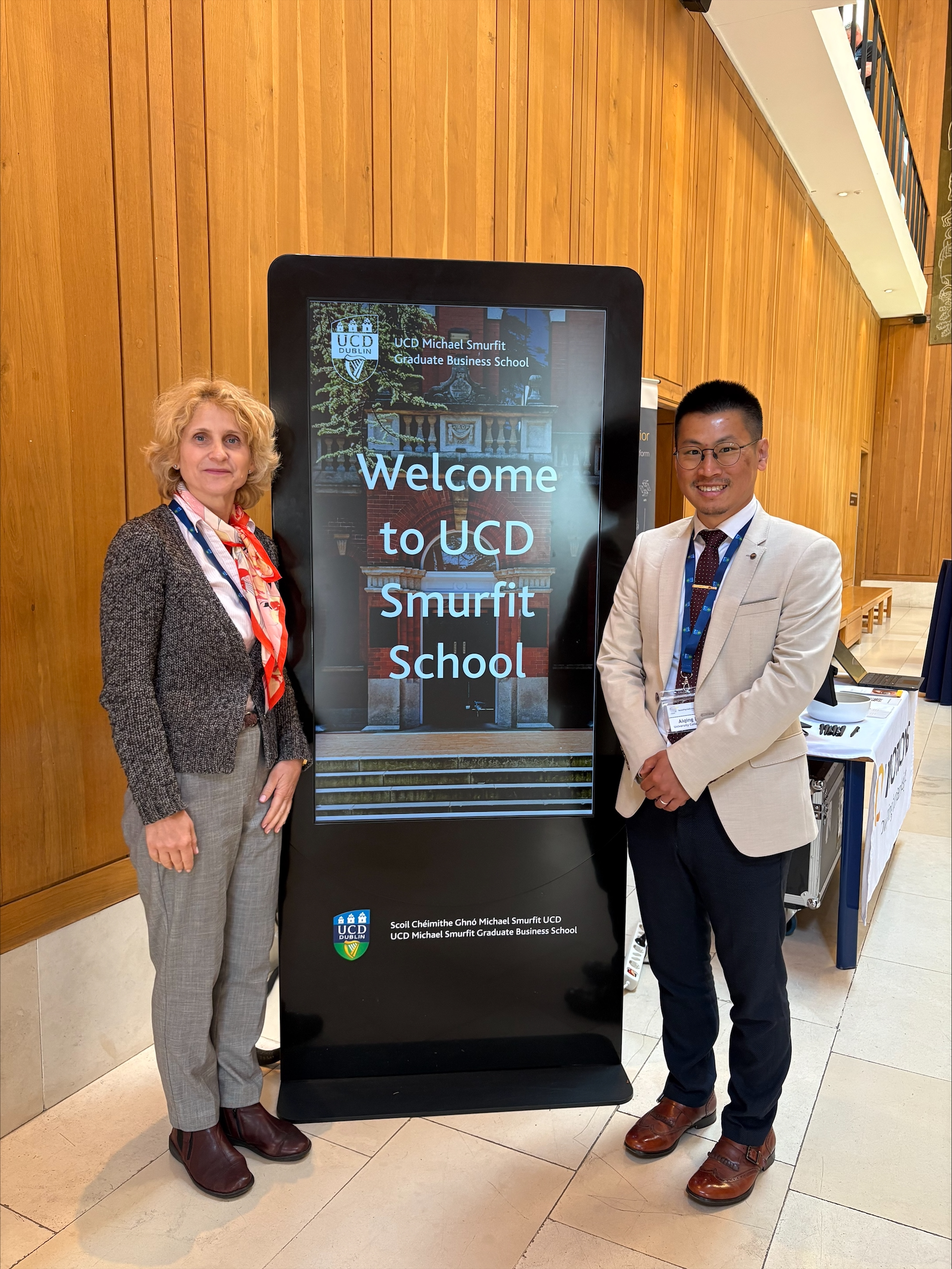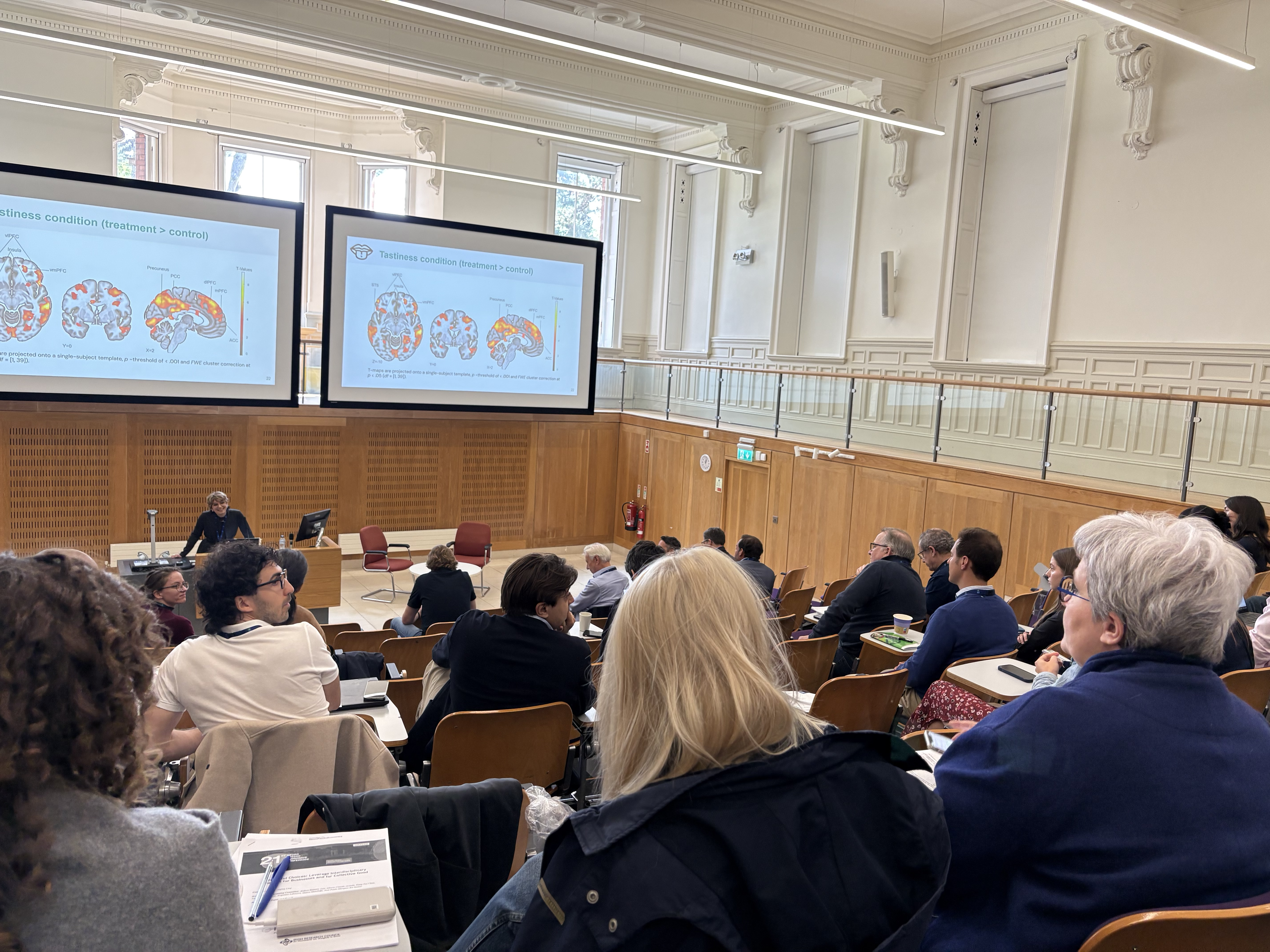Exploring the Brain Behind the Screen: GBSB Global at the Forefront of AR Research in Education
Dublin, June 2025 — GBSB Global Business School continues to demonstrate its leadership in the field of technology, learning, and human cognition. This month, Dr. Olga Kanashina, an associate professor at GBSB Global, represented the institution at the 21st Annual Neuropsychoeconomics Conference in Dublin from June 3 to 6. There, she gave a presentation on Augmented Reality Perspectives in Education.



Hosted by the Association for NeuroPsychoEconomics, the conference is a premier academic gathering that explores how neuroscience, psychology, and economics influence real-world decision-making.
Dr. Kanashina’s session explored the cognitive, emotional, and pedagogical dimensions of Augmented Reality (AR), a technology that is rapidly changing how students engage with learning.
This presentation is part of an ongoing, collaborative research project with Dr. Hind Naaman, Head of Studies and Academic Operations at GBSB Global; Dr. Wiktor Andrzej Patena, Dean and Executive President of GBSB Global; and Dr. Maria Nikitina from Sapienza University in Rome.
Their forthcoming paper, Perception and Acceptance of Augmented Reality: A Neuroeconomic Perspective in Education, adopts both empirical and theoretical approaches to AR adoption in academia. The paper utilizes the Extended Technology Acceptance Model (ETAM), cognitive reflection tests, and neuroeconomic frameworks.
Inside the Neuroeconomics of AR Adoption
Grounded in neuroeconomic theory and pedagogical research, Dr. Kanashina’s presentation explored how AR environments can enhance cognitive engagement, reduce mental overload, and stimulate emotional processing by activating the prefrontal cortex and the limbic system. Using the Extended Technology Acceptance Model (ETAM), Cognitive Load Theory, and Kolb’s Experiential Learning Cycle, Dr. Kanashina mapped the psychological mechanisms underlying AR adoption in business education.
A key insight emerged: Motivation and perceived educational value, not simplicity, are the strongest predictors of student adoption. Contrary to prevailing assumptions, Gen Z students are not primarily driven by ease of use. Rather, they are energized by immersive, meaningful, and goal-oriented learning experiences that simulate real-world challenges. AR’s capacity to foster spatial reasoning, problem-solving, and interactive storytelling makes it uniquely suited to this emerging cognitive profile.
Humans are not perfectly rational learners – observed Dr. Kanashina. They respond to perceived value and emotional payoff. That’s exactly where AR becomes a powerful pedagogical tool—it activates attention, motivation, and memory all at once.
The presentation also revealed interesting findings from a mixed-methods pilot study with undergraduates in Barcelona. Although 78% of the participants preferred immersive educational formats, statistical modeling revealed no significant correlation between cognitive rationality, as assessed by the Cognitive Reflection Test, and acceptance of AR. Internal motivation, perceived usefulness, and emotional resonance were found to be the dominant factors influencing students’ intention to adopt AR technologies.
Shaping the Future of Learning with Immersive Technologies
As these technologies transform the field of education, GBSB Global is dedicated to blending academic theory with practical application. Our approach prepares learners to engage with knowledge, question it, and ultimately shape it.
With the global AR/VR education market projected to exceed $14 billion by 2028, GBSB Global is investing in research that tracks and shapes emerging trends. The forthcoming publication will offer valuable insights for educators, instructional designers, and policymakers who are working to create more engaging and effective learning environments.
The full research article is under development and will be submitted to an international, peer-reviewed journal for publication. Further updates will follow as the complete study progresses toward release.